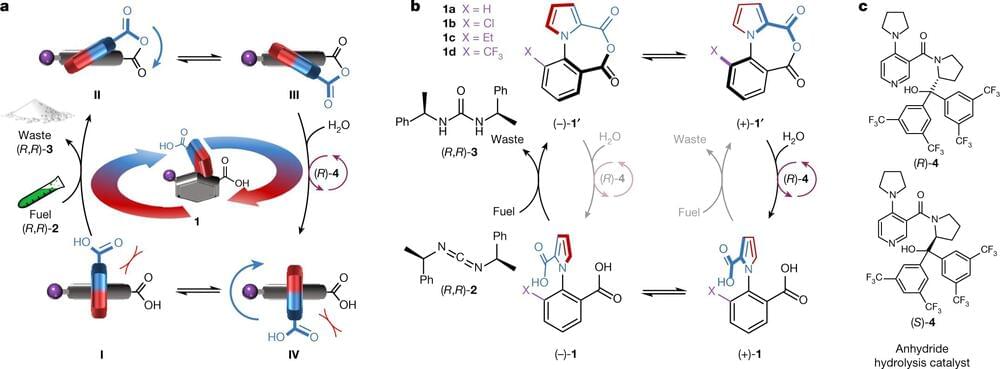Bart Blommaertsif it helps. But don’t cut internet cables with that thing!!
Andreas StürmerFinally. Is it going to be a rail or car tunnel?
Eric KlienAdmin.
Andreas Stürmer Rail.
Jose Ruben Rodriguez Fuentes shared a link.
A team of researchers at the University of Manchester has created a molecular motor that consumes chiral fuel to drive rotation around a single covalent bond. In their paper published in the journal Nature, the group describes their work in developing a chemically powered directionally rotating motor and why they believe their efforts will result in similar systems being developed with other materials.
Prior research has shown that examples of biological motors exist in nature—ADT synthase is but one example. Such examples have served as inspiration for chemists attempting to replicate such motors and while some progress has been made, none had been developed that were able to rotate in a 360° axis around a single bond —until now.
In this new effort, the researchers created a biological motor using 26 atoms—one where the motor was able to fully rotate around a single bond and continue rotating as long as it was fed fuel. Their motor consisted of two parts: a pyrrole-2 carbonyl group which made up the rotating part of the motor, and a phenyl-2 carbonyl that served as a base. The two parts were connected together with a N-C bond, which also served as the axis for the motor. A carbodiimide fuel was used to drive the rotation. As it was added to the motor, an intramolecular anhydride formed resulting in a hydrolysis reaction with a directional bias based on the chirality of the fuel—and also another additive to speed up the process. The researchers note that applying a diacid to the rotor and withdrawing fuel prevented the rotation when desired.










Comments are closed.